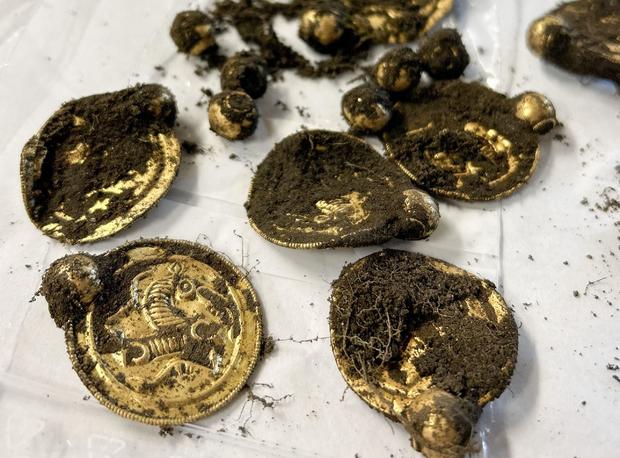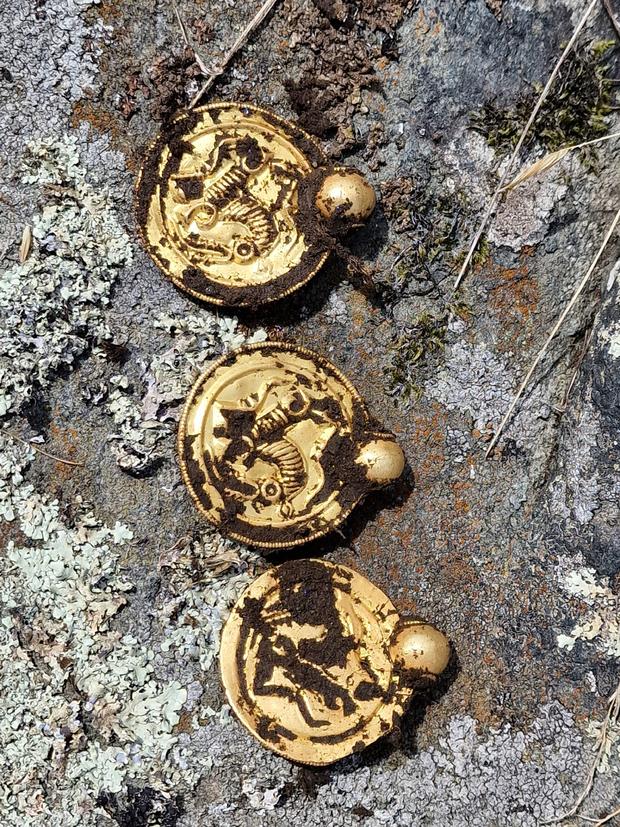A man bought a metal detector to get off the couch. He just made the "gold find of the century" in Norway.
At first, the Norwegian man thought his metal detector reacted to chocolate money buried in the soil. It turned out to be nine pendants, three rings and 10 gold pearls in what was described as the country's gold find of the century.
The rare find was made this summer by 51-year-old Erlend Bore on the southern island of Rennesoey, near the city of Stavanger. Bore had bought his first metal detector earlier this year to have a hobby after his doctor ordered him to get out instead of sitting on the couch.
"At first I thought it was chocolate coins or Captain Sabertooth coins," said Bore, referring to a fictional Norwegian pirate. "It was totally unreal."
Ole Madsen, director at the Archaeological Museum at the University of Stavanger, said that to find "so much gold at the same time is extremely unusual."
"This is the gold find of the century in Norway," Madsen said.
The museum posted video of the treasure on Facebook and other images on social media, writing: "It will be preserved and displayed as soon as possible in our upcoming exhibition."
In August, Bore began walking around the mountainous island with his metal detector. A statement issued by the university said he first found some scrap, but later uncovered something that was "completely unreal" — the treasure weighing a little more than 100 grams.
Under Norwegian law, objects from before 1537 and coins older than 1650 are considered state property, and must be handed in.
Associate professor Håkon Reiersen with the museum said the gold pendants — flat, thin, single-sided gold medals called bracteates — date from around A.D. 500, the so-called Migration Period in Norway, which runs between 400 and about 550, when there were widespread migrations in Europe.
The pendants and gold pearls were part of "a very showy necklace" that had been made by skilled jewelers and was worn by society's most powerful, said Reiersen. He added that "in Norway, no similar discovery has been made since the 19th century, and it is also a very unusual discovery in a Scandinavian context."
An expert on such pendants, professor Sigmund Oehrl with the same museum, said that about 1,000 golden bracteates have so far been found in Norway, Sweden and Denmark.
He said symbols on the pendants usually show the Norse god Odin healing the sick horse of his son. On the Rennesoey ones, the horse's tongue hangs out on the gold pendants, and "its slumped posture and twisted legs show that it is injured," Oehrl said.
"The horse symbol represented illness and distress, but at the same time hope for healing and new life," he added.
The plan is to exhibit the find at the Archaeological Museum in Stavanger, about 300 kilometers (200 miles) southwest of Oslo.
The most recent comparable find in Norway dates back to the 19th century.
"Given the location of the discovery and what we know from other similar finds, this is probably a matter of either hidden valuables or an offering to the gods during dramatic times," professor Hakon Reiersen said.
In line with Norwegian law, both Bore and the landowner will receive a reward, although the sum has not yet been determined.
AFP contributed to this report.






